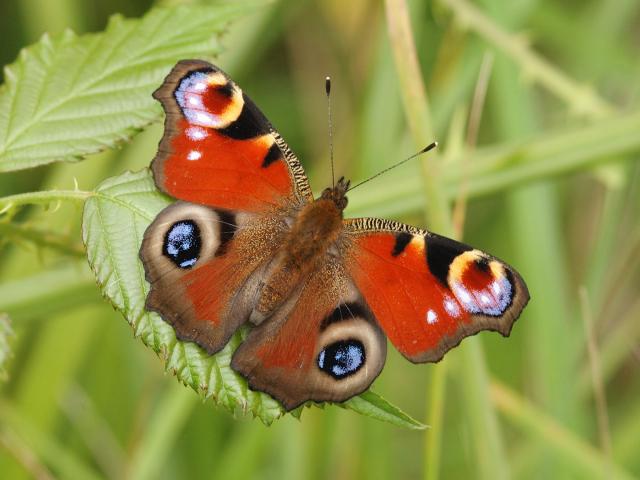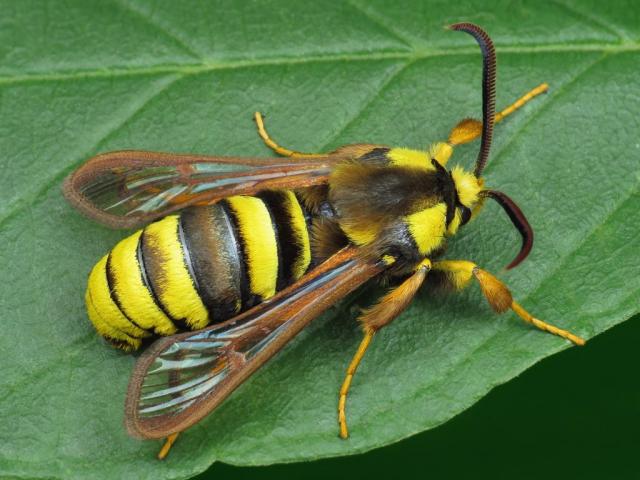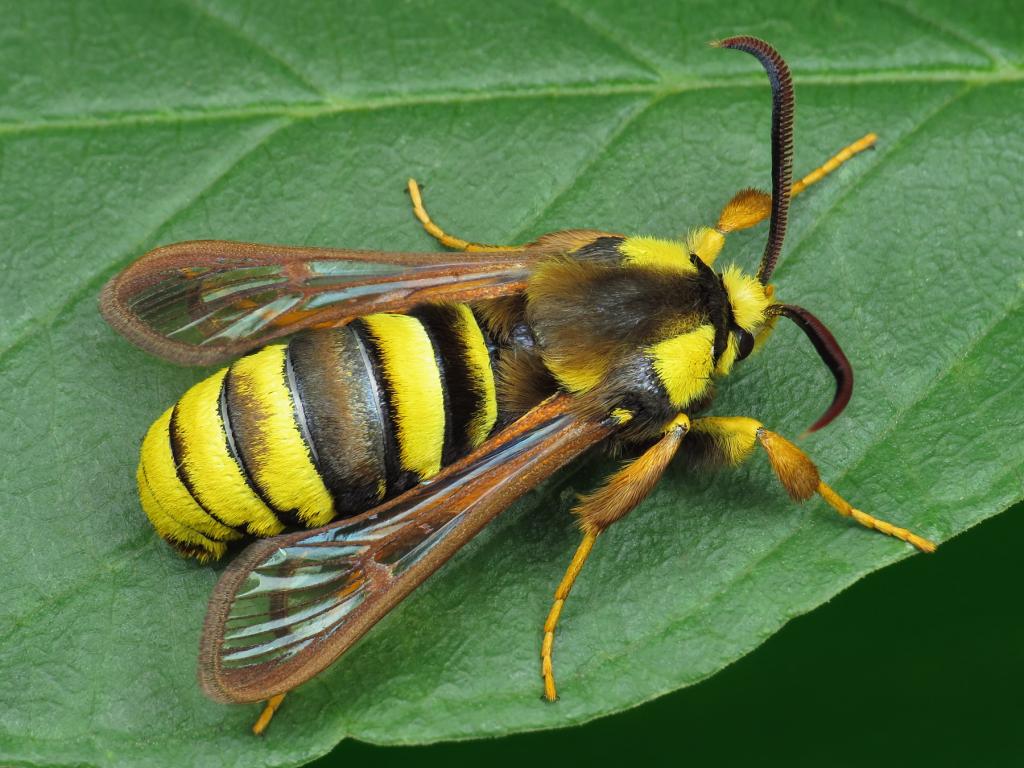When it comes to fooling predators, butterflies and moths have got a few tricks up their sleeves. Let’s delve into the tools of deception of our favourite winged insects…
Peacock

The Peacock is easily one of the UK’s most recognisable butterflies with its vibrant colours and striking spots on its wings – but did you know those spots are more than just decoration?
Scientists have shown that the spots actually play an important role in deterring predators like birds. It is believed the spots mimic eyes, making it appear to a predator that they’re approaching a much bigger creature – maybe even a dangerous one. The Peacock is known to flash their “eyespots” at potential predators with a flap of their wings, emitting a noise like a hiss at the same time which seems to scare off mammal predators such as mice.
The eyespot trick works so well that painting eyes on cows’ behinds in the Okavango Delta in Botswana, Africa have significantly reduced lion attacks on the livestock!
Brimstone

One of the first signs that spring is here is the appearance of the Brimstone – a bright sulphurous yellow butterfly which, whilst conspicuous in flight, can almost disappear when landed. That’s because the wings of the Brimstone are patterned with veins and shaped to appear exactly like a leaf.
This clever camouflage helps it avoid predators, particularly when it’s laying its eggs on Buckthorn leaves, among which it blends seamlessly.
Orange-tip

Another case of clever camouflage is from the Orange-tip, but this time, it’s the chrysalis doing the deceiving.
Once full to the brim of delicious plants, the caterpillars head off in search of woody plant stems to which they attach themselves with silk threads. They then shed their skin for the final time – a cool enough trick on its own – to form a chrysalis which is shaped to look like a thorn! Again, this is a trick to fool any would-be predators that might come to investigate.
Hornet Moth

The Hornet Moth is part of a group called the ‘Clearwings’ – day-flying moths with scaleless areas on their wings, which are transparent as a result. Their clear wings form part of their cunning trick of mimicking wasps.
With its yellow and black stripes and large size, the Hornet Moth, as you might have guessed from the name, mimics a hornet. Potential predators may not find hornets quite as tasty as moths, and they might think twice about attacking in case they get stung.
There are species of moths and butterflies across the world which mimic snakes, bees, spiders, and even frogs!
Large Blue
The Large Blue has a very clever trick up its sleeve, one that doesn’t involve changing its appearance, but helps its caterpillars go undercover, nonetheless.
This rare butterfly lives on grasslands which are also home to red ants. The female butterflies lay their eggs on Wild Thyme which the caterpillars feed on while they are young. However, when the caterpillars reach around 4mm long, they drop to the ground and secrete a sweet substance which attracts foraging red ants. The ants, mistaking the caterpillars for ant grubs, pick up the caterpillars and take them below ground to a brood chamber. Once there, the caterpillars release a cocktail of chemicals that mimic the ants and allow them to remain undetected, feasting on their unwitting hosts until big enough to pupate. After pupating, much to the surprise of their ant caretakers, the adult Large Blues emerge, crawl out of the ground to expand their wings, and begin the whole cycle again.
Want to hear more about butterflies and moths and stay up to date with what’s happening at Butterfly Conservation? Sign up to our e-newsletter and get the latest stories to your inbox.


